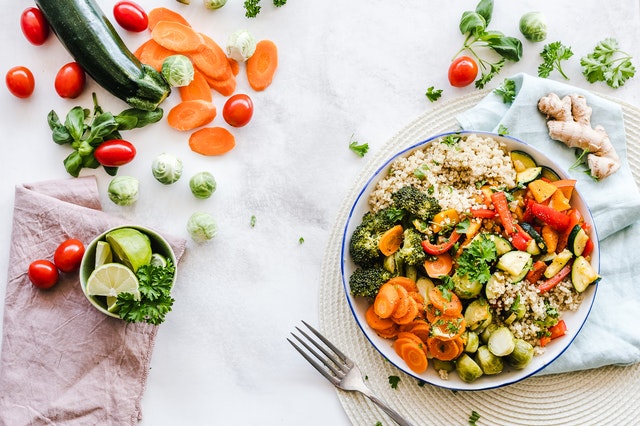You are what you eat is more than just an old adage passed down from generation to generation. People who are concerned about their health and well-being make healthy eating a priority for themselves and their family. The healthiest way to realize this objective is to follow a clean eating diet, which is based on a few simple principles. The primary principle is that those who choose to follow a clean eating program strive to be more aware of the foods they eat and their nutritional value. It is easy to customize a clean eating diet to fit anyone’s goals for living a healthy lifestyle.
There is no room for refined sugar in an eating clean diet. Sugar adds calories, but has no nutritional value. Sugar is a hidden ingredient in many foods, so it pays to read labels. It can also be in the form of high fructose corn syrup and should be avoided completely. Other sweeteners can be substituted if a sweet taste is desired.
Concentrate on Whole Foods
These are foods that have not been processed or refined in any way. Consuming whole fruits and farm-fresh vegetables is a major component of clean eating. Grass-fed meats and low fat dairy products should be included in the diet. Walnuts, pecans, cashews and other nuts must be unsalted. Bread should be made from whole grains such as wheat or rye. Plant-based foods such as peas, lentils, and beans add fiber to the clean eating diet and may contribute to a significant reduction in intestinal and stomach disorders.
Shop for Groceries and Cook
Some people may think there is a downside to preparing meals at home, so they opt for buying ready-made meals in a box. Shopping for groceries and cooking does take some planning and organization, but is really easier than it sounds. Simple, clean food does not require much preparation. Vegetables and fruits are simple to prepare and only require a some chopping and maybe sautéing before being served as a delicious meal that is satisfying and healthy.
Spice Adds Flavor to a Clean Diet
Many people feel that whole and fresh foods are boring and tasteless, but they do not have to be. Instead of adding sodium or sugar to food, many herbs and spices add flavor to clean foods.
Turmeric is a healthy spice that contains curcumin, a Phytochemical that helps fight cancer. Thyme has antibacterial agents and may protect against some tumors. Nutmeg contains many essential vitamins including potassium and calcium. Basil is a versatile spice containing powerful antioxidants as well as manganese and potassium. This spice adds flavor to most meat dishes and soups.
Eliminate Processed Foods
Processed foods are those that contain refined carbohydrates and sugar. These cause high levels of glucose, which forces the body to make more insulin; the hormone used to turn glucose into energy. Too much can cause some people to gain weight and be prone to developing diabetes. Insulin levels are easier to maintain by balancing healthy fats and protein by following a clean eating diet. This makes weight loss much easier to attain.
Choose Real Foods for Clean Eating
Real foods are those that are found in their natural state. These foods have been minimally processed and are perfect for clean eating. Organic foods are clean foods that have never been exposed to any pesticides or insecticides. A good way to balance clean eating is to incorporate fruits and vegetables in dishes. These real foods such as apples, berries, peppers, and tomatoes blend to make colorful, healthy salads or main dishes.
Multiple Benefits of Clean Eating
Taking a clean approach to eating involves cutting down or eliminating junk and processed foods and embracing a real food diet. This change to eating whole foods makes it much easier to stay healthy and avoid disease. Those who choose to follow a clean eating diet realize that being healthy is a two-step process. Begin eating a clean diet by choosing whole foods that are healthy, fiber-rich, and full of essential nutrients. Adhering to this philosophy of only eating clean foods will soon lead to improved health and a more active lifestyle.






